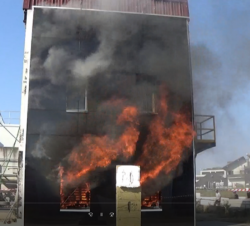Services available at espace anglais
Most of the work performed by espace anglais falls into one of three categories : French-to-English translation, revision of translated content (French to English) and English language editing (texts invariably written by a non-native speaker).
I also however provide variants of these services, such as machine translation post-editing (“MTPE” – editing of text that has been translated automatically using a machine translation memory), and other tasks may be added to or included in one of the three main services. Examples of such tasks would be layout formatting, the creation or approval of glossary terms, final proofing / sign-off or even updating a translation memory.
French-to-English translation
Translation involves converting written text from one language (the “source” language) into another (the “target” language). The meaning of the text, the style of the author and the chosen register must all be conveyed accurately, taking into account any specific terminology. Other elements, such as the target audience of the text, the context of use and any other constraints, may also need to be factored in.
The translator must identify these aspects to render the text faithfully – and authentically – in the target language. The translated text should read as if it was written in the target language in the first place.
My approach at espace anglais is designed to achieve just that. I only translate into English, my mother tongue, as per standard professional translation practices. Whilst my French skills are close to those of a native speaker, having lived in France for over twenty years, I never translate into French professionally.
Typically, I begin all projects with a read-through of the text, followed by research to find relevant terms where necessary. I ask the customer questions when I’m not sure about a term, as they often know more about specific industry terms than I do. I use customer glossaries when available, in addition to my own resources and reference material. I also use CAT (Computer- Assisted Translation) software, SDL Trados Studio. This tool helps to improve the consistency and accuracy of my translations, as well as to apply the customer’s specific terminology, style and register.
Once translated, I proofread the text for typos and omissions, check the layout and formatting is correct and consistent with the original. Finally, after delivering the translations, I make any changes or corrections requested, taking on board any comments and answering any queries that the customer may have.
Revision
Revision means comparing a translated text with the original version and making sure that everything has been translated accurately and authentically. I correct grammatical, spelling and syntactical errors. I also check that the style and register of the target text are consistent with those of the source text, the customer glossary has been used correctly and that the translation is generally fit for purpose.
This task involves using many of the same skills and principles as those required for a translation.
Unilingual editing
Unilingual editing or proofreading is similar to revision in that many of the same checks are made – that the language used is appropriate and authentic, and the style and register are relevant for the subject area of the text. As this kind of document is generally written directly in English – often by a non-native speaker – it cannot be compared with the original. However, syntax, grammar and vocabulary errors can be corrected and the text can be given a more idiomatic and natural sounding feel.
It is worth noting that for this type of service, the exact scope of the corrections and changes must be determined by the customer. Editing may entail simply correcting obvious mistakes; it may also involve improving the style and register to make the text flow more naturally or it can mean a large-scale rewrite in order to make it read as much as possible as if was written originally in English. As these different levels of editing and correction require more or less time to be achieved, the price tends to vary accordingly.
Cost
Generally speaking, this is based on a rate per word multiplied by a number of words to be translated, revised or edited, but it may also be based on an hourly rate and an estimated number of hours for the task (typically, a revision or editing job). The applied rate varies for each project depending on the technical difficultly of the content, the target audience and the urgency of the request. Discounts are offered for repetitions, where there are matches in the text (sentences or words repeated from translations previously done by espace anglais) or in the event of repeat requests/framework agreements. An analysis is always carried out on content in order to identify any repetition and/or concordance.
A detailed quotation may be provided on request, free of charge and with no strings attached, for all of the services provided by espace anglais. As a guide, my word rates go from €0.11 to €0.14 excl. tax per source word and my hourly rate is between €40 and €50 excl. tax.





















